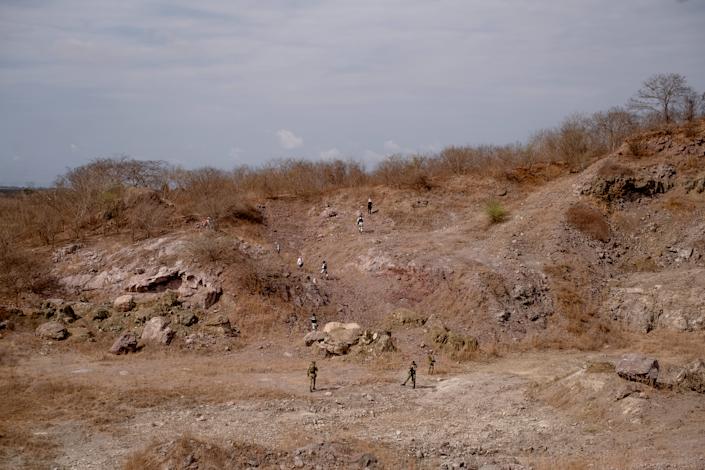by Oscar Lopez for The New York Times
They lie in clandestine graves strewn across the desert, mingled in communal pits, or hacked to pieces and scattered on desiccated hillsides.
Buried without a name, often all that’s left once their bodies are gone are the empty casings of a person: a bloodied sweatshirt, a frilly top, a tattered dress.
All over Mexico, mothers wander under the scorching sun, poking at the earth and sniffing for the telltale scent of decomposing flesh, hoping for a scrap that points toward their missing son or daughter.
For most, the answers never come.
A New York Times photographer documented their search and the clothing that was found with unidentified bodies after it was laid out by forensics lab workers.“It’s a horrible uncertainty I don’t wish on anyone,” said Noemy Padilla Aldáz, who has spent two years looking for her son, Juan Carlos, who was 20 years old when he vanished after finishing his night shift at a local taqueria.
“If I knew he was dead, then I would know that he’s not suffering,” she said. “But we don’t know, and it’s like torture, that not knowing.”
Mexico is nearing a grim milestone: 100,000 disappeared people, according to Mexico’s National Search Commission, which keeps a record that goes back to 1964.
In a country wracked by a drug war without end, death can feel pervasive. Murder rates climb inexorably, now topping 30,000 a year. Macabre images of bodies strung up on bridges or tossed on roadsides as warnings appear on newscasts. Torture techniques get nicknames.
But disappearance can be the cruelest blow. It deprives families of a body to mourn, of answers — even of the simple certainty, and the consolation, of death.
The missing haunt Mexico’s collective memory, a crushing testament to the inability of government after government to staunch the bloodshed and bring criminals to justice.“Disappearance is perhaps the most extreme form of suffering for the relatives of victims,” said Angélica Durán-Martínez, a professor of political science at the University of Massachusetts, Lowell, and an expert on violence in Latin America.
The faces of the disappeared loom, larger than life, on banners and posters in public squares across Mexico, over messages from relatives pleading for any information about their fate.
But even when remains are found, the task of identifying the dead can be arduous, at times taking investigators months of digging through the brush and combing through dirt for tiny fragments of bone, many of which can be too small or worn to help identify the body.
CLICK HERE FOR FULL ARTICLE BY OSCAR LOPEZ ON THE NEW YORK TIMES
TYT Newsroom


